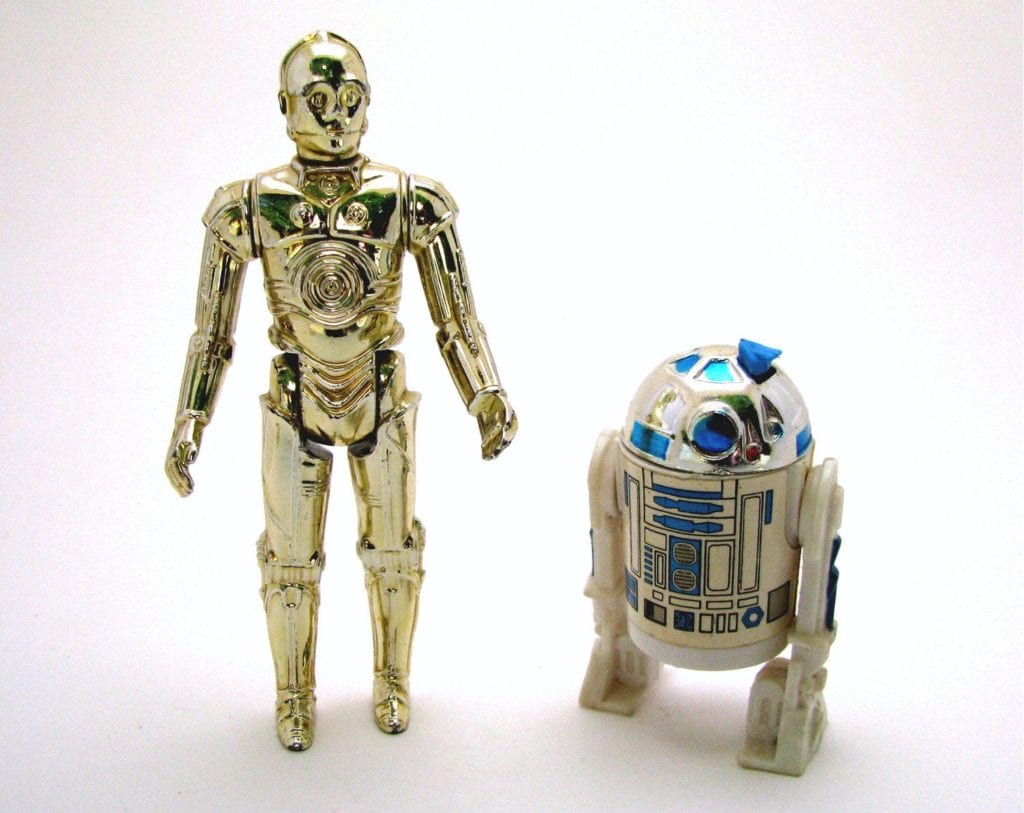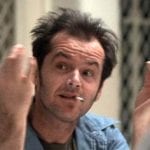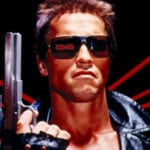 Politics
Politics  Politics
Politics  Weird Stuff
Weird Stuff 10 Freaky Times When Famous Body Parts Were Stolen
 Miscellaneous
Miscellaneous 10 Interesting Things Manufacturers Stopped Making and Why
 Gaming
Gaming 10 Funny Tutorials in Games
 History
History 10 Fascinating Little-Known Events in Mexican History
 Facts
Facts 10 Things You May Not Know about the Statue of Liberty
 Movies and TV
Movies and TV 10 Movie Adaptions That Brought Popular Songs to Life
 Health
Health 10 Miraculous Advances Toward Curing Incurable Diseases
 Miscellaneous
Miscellaneous 10 Undeniable Signs That People’s Views of Mushrooms Are Changing
 Animals
Animals 10 Strange Attempts to Smuggle Animals
 Politics
Politics 10 Countries Where Religion and Politics Are Inseparable
 Weird Stuff
Weird Stuff 10 Freaky Times When Famous Body Parts Were Stolen
 Miscellaneous
Miscellaneous 10 Interesting Things Manufacturers Stopped Making and Why
Who's Behind Listverse?

Jamie Frater
Head Editor
Jamie founded Listverse due to an insatiable desire to share fascinating, obscure, and bizarre facts. He has been a guest speaker on numerous national radio and television stations and is a five time published author.
More About Us Gaming
Gaming 10 Funny Tutorials in Games
 History
History 10 Fascinating Little-Known Events in Mexican History
 Facts
Facts 10 Things You May Not Know about the Statue of Liberty
 Movies and TV
Movies and TV 10 Movie Adaptions That Brought Popular Songs to Life
 Health
Health 10 Miraculous Advances Toward Curing Incurable Diseases
 Miscellaneous
Miscellaneous 10 Undeniable Signs That People’s Views of Mushrooms Are Changing
 Animals
Animals 10 Strange Attempts to Smuggle Animals
Top 10 Movies That Helped Ruin Filmmaking
…annnnnnd CUT! That’s a wrap! Great job everyone – way to change the filmmaking paradigm for the worse.
We’ve all heard the term “influential films”: movies whose innovative approaches inspired others to further the medium. Unfortunately, a trend also can devolve, leaving its originator – however creative or classic a film it might be – responsible for another chime in cinema’s death knell.
In chronological order, here are ten films – including several great ones – that have negatively impacted filmmaking.
Top 10 Ways Hollywood Ruined Your Favorite TV Shows
10 Jaws (1975)
We’re gonna need a bigger boa…uh, budget.
The term “blockbuster” first appeared in 1942, when Time Magazine recounted an Allied bombing of fascist Italy using explosives so powerful they could destroy entire city blocks. The following year, Time called the film adaptation of Mission to Moscow “audacious in the extreme” and “as explosive as a blockbuster” and, soon, the word began referring to a movie’s commercial success rather than artistic ambition.
Then, in 1975, one film permanently solidified the word’s meaning. Steven Spielberg’s breakout hit Jaws is generally regarded as Hollywood’s first true blockbuster. Not only did people literally queue up around the block for tickets, but it became the first film to earn $100 million. It also helped set the precedent that such movies are released in summertime, now known as blockbuster season.
Why, you ask, does a movie that won three Oscars and was nominated for Best Picture deserve inclusion on this list? On its own merit, it doesn’t. At least the original summer blockbuster was a critically-acclaimed classic.
But in Hollywood, the bigger issue is monkey see, monkey do – and most monkeys are far less talented than Spielberg. Today, mass appeal blockbusters squeeze out mid-budget films while offering little artistic value themselves. Are some good? Sure. But for every Independence Day, there’s a Wild Wild West, a Pearl Harbor and, God help us, an Independence Day Resurgence, which prompted many to root for the aliens.
9 Star Wars Episode IV: A New Hope (1977)

“Toyetic” refers to a movie’s potential for merchandising licensed toys, games and novelties. The term was coined by Kenner Toys executive Bernard Loomis, who used it disparagingly while discussing opportunities for 1977’s Close Encounters of the Third Kind. Loomis felt differently about another sci-fi flick released that year – and he’d quickly be proven prescient.
Incredibly, “Star Wars” struggled to find a studio home. To get it greenlighted, George Lucas agreed to forgo a $500,000 director’s salary; in its place, he received the licensing and merchandising rights.
Good move, George. Upon the film’s May 1977 release, Kenner Toys was so overwhelmed by Star Wars’ surprise success – and the subsequent demand for toys – that they quickly ran out of stock. In fact, they still hadn’t caught up by Christmas, prompting the issuing of an “Early Bird Certificate Package.” Under the tree that year, kids everywhere opened empty boxes with IOUs for action figures unavailable until springtime (thanks, Santa). FORTY MILLION were sold by late 1978.
Those empty boxes were a Pandora’s Box. Like other entries on this list, a terrific film had paved the way for far less worthy flicks to think merch first, quality filmmaking second. Star Wars itself went on to pair worse films with worse merch. Lowlights include a Darth Vader yoga mat, a Yoda Magic 8-Ball and, for the incontinent Jedi in us all, Star Wars branded adult diapers.
8 Superman (1978)
It’s a bird! It’s a plane! It’s… a pretty good movie that set the stage for the film industry’s most mindless genre.
While films starring caped crusaders were a thing before its 1978 release, Superman: The Movie was the first mega-budget superhero blockbuster. In fact, at $55 million it was the most expensive film ever made to that point.
Its filmmakers took pains to get moviegoers to see superman as more than a comic book carryover. Two legendary actors, Marlon Brando and Gene Hackman, were cast in supporting roles, lending their gravitas despite the little-known star, Christopher Reeve – who only became the Man of Steel after superstars Robert Redford and Burt Reynolds both declined.
After producers flirted with the already sought-after Steven Spielberg, Richard Donner of “Omen” fame was tapped to direct. He had a campy script rewritten to a darker, more dramatic bend. It paid off. Superman made $300 million, earned four stars from influential critic Roger Ebert, and holds a 94% favorability rating on Rotten Tomatoes.
Its success was the worst possible thing for moviemaking. Forty years and scores of cheesy, formulaic and plot-free comic book adaptations later, superhero movies continue to rake in money from the tasteless masses while limiting the number of interesting, risk-taking films Hollywood studios greenlight.
Are a few good? Sure. But for every Black Panther there are dozens of Ant-Man’s, Suicide Squads and Green Lanterns in a genre that has zapped filmmaking creativity like none other.
7 Halloween II & Friday the 13th Part 2 (1981)
The second installments of what became slasher film franchises were by no means the first prominent sequels. But while Jaws 2, Rocky 2 and The Godfather Part 2 were fairly well-received follow-ups to Academy Award-winning classics, Michael Myers and Jason Voorhees were deservedly panned for exactly what they were: slapped-together sequels without a shred of their predecessors’ appeal.
Released in 1978, the original Halloween was filmed over just 20 days. Its $300,000 budget was low even for horror, and most costumes and props were handcrafted or purchased from thrift stores. Regardless, the movie made nearly $70 million partly because, by sheer necessity, it stripped down the plot to a simple yet suspenseful maniac-on-the-loose stabfest. The film holds an incredible 96% critics rating on Rotten Tomatoes.
The second instalment did less with more. Despite a more liberating $2.5 million budget, it managed to, per Roger Ebert, suffer “a fall from greatness” that “doesn’t even attempt to do justice to the original.” Its 32% Rotten Tomatoes rating – a 64% drop-off from the original – concurs.
Friday the 13th mirrors this money-grabbing sophomoritis. After the original earned critical praise and a $60 million haul from a $550,000 budget, the sequel – despite pivoting to the now-iconic Jason Vorhees – gets a putrid 28% rating on Rotten Tomatoes (admittedly that’s the heinously fake-news “critics” rating the media loves to push, but still . . . )
Unfortunately, enough people still came that the two franchises set the template for low-budget, low-effort horror sequels that accomplish little except pile up bodies.
6 Toy Story (1995)
Toy Story was another exceptional film that started an unfortunate trend. While it delivered on its promise to take viewers “to infinity and beyond,” the 1995 PIXAR classic did the exact opposite for traditional animated films.
Let’s be clear: Toy Story is a tremendous film. Excellent casting (even Tim Allen was tolerable!) and an endearing premise – toys competing for their owner’s love – helped it become the rare children’s movie that also appealed to adults. The result was $375 million in ticket sales.
Just as importantly, Toy Story became one of the few movies that holds a 100% approval rating on Rotten Tomatoes, whose critical consensus reads: “Entertaining as it is innovative, Toy Story reinvigorated animation while heralding the arrival of Pixar as a family-friendly force to be reckoned with.”
And therein lies the problem: the reckoning. Toy Story’s revolutionary employment of three-dimensional computer graphics started a slow death for conventional hand-drawn animation movies (except in Japan). Hits like Shrek, Ice Age and the Incredibles furthered the push from the pen to the pixel.
While traditional animation hasn’t disappeared entirely, today even films that seem like conventional cartoons are typically supplemented with computer graphics; Frozen is a prominent example of this hybrid approach. It’s truly A Whole New World since 1992’s Aladdin.
5 Saving Private Ryan (1998)
Yikes – two in a row for Tom Hanks.
But again: not his fault. In fact, not anyone’s fault. Saving Private Ryan is one of the best war movies of all time. It was nominated for 10 Academy Awards, and won five – including Steven Spielberg for Best Director.
But it was Spielberg’s brilliance in the movie’s epic opening scene, an incredibly lifelike 20-minute depiction of the D-Day invasion of Normandy Beach, that shook things up – first for the better, and then decidedly for the worse.
To mimic the disorientation of battle, Spielberg employed a device previously associated with low-budget horror films: a shaking camera. And of course, it worked so well that far less talented filmmakers making far less worthwhile films decided to shake it up themselves.
Some, like this list’s next entry, pulled it off quite well. But most of the time, shaking cameras are used either to a) make a fighting scene seem more dramatic than it is while disorienting the audience (the Bourne movies are prime examples); or b) give crummy action or sci-fi flicks faux gravitas (SEE: Godzilla 2014, Awful).
4 The Blair Witch Project (1999)
“Josh? JOOOOOOSH?!? Oh my God. where are you. Josh?! You’re scaring everyone…”
And worse, you’re convincing every college film major he can make a box office phenomenon with a hand-held camera.
The Blair Witch Project was an experimental horror mockumentary released in 1999. The faux-amateur film told the story of three college filmmakers – Heather Donahue, Michael Williams and (of course) Joshua Leonard – who hike into the woods in Maryland to uncover the secret of a local legend, the Blair Witch.
According to the movie’s ingenious marketing strategy, the cast was listed as “missing” or “deceased” in the runup to release. The film, ads said, comprised the footage found on their recovered video camera. Though this was easily debunked, millions nonetheless entered theaters believing they were witnessing the final days of three vanished young adults.
Both the marketing strategy and the movie itself simply worked. Disorienting camera angles, leaf-rustling running and panicked hyperventilating were all convincingly lifelike as the cast descended deeper into the eerie, engulfing wilderness.
And boy did it pay off. From a budget of less than $500,000, the sleeper hit raked in nearly $250 million at the box office – a 500-fold profit that ranks among filmmaking’s highest ever.
Unfortunately, by showing that low-budget can make big bucks, The Blair Witch Project revived the “found footage” genre at a time when equipment was becoming affordable, giving amateur filmmakers the undue confidence to make increasingly insufferable films. Thanks a lot, Josh.
3 Star Wars Episode II: Attack of the Clones (2002)
“Ruin Star Wars we must.”
Throw in moviemaking too, Master Yoda. According to online review personality Mr. Plinkett, “Star Wars Episode II is the worst thing ever made by humans, except for the bagpipes.”
First, it ruined the franchise forever. While its predecessor, 1999’s Episode 1: The Phantom Menace, was a shitshow all its own, the second prequel finds Anakin coming of age, with the events now shaping his dark destiny. The dialogue – including a widely mocked monologue about the annoyances of sand – was awkward, the acting rigid, and Yoda – he of “Judge me by my size, do you?” – was reduced to a tiny green back-flipping muppet who can’t best a lesser opponent because… you guessed it, his reach wasn’t long enough. Did we really need to see THIS (clip above), Mr. Lucas?
But the broader damage inflicted by Episode II was its wholesale incorporation of computer-generated imagery (CGI). Nearly EVERYTHING in the movie is fraudulent – and it shows. For example, actors clearly filmed in front of tiny green screens sit or slowly pace – and are then juxtaposed into wide-open spaces like fields, palaces and the cavernous Jedi Temple.
The whole thing just FEELS fake, and stands as Exhibit A of how technology can ruin a film. Of course, the film’s commercial success (because hey, it was a Star Wars movie) gave filmmakers the greenlight to forgo expensive real-life sets in lieu of cost-effective green-screen studios.
2 Transformers (2007)
It started out promisingly enough for Michael Bay. Starting in 1995, he went on a three-film winning streak by directing Bad Boys (1995), The Rock (1996) and Armageddon (1998). While by no means cinematic masterpieces, all were fun action films no one would point to as a threat to the future of cinema. And while Bay’s 2001 Pearl Harbor was (literally) a bomb, most figured he’d rebound with another entertaini…
… wait, is that Optimus Prime?
The 2007 release of Transformers is a reverse watershed moment: it lowered the bar for how far filmmakers could descend in replacing a functional storyline with special effects. It finds Michael Bay perfecting the “deceit via dazzle” art of distracting viewers from gaping plot holes and lack of character development by simply blowing stuff up.
Worse, Transformers was REWARDED for its utter abandonment of storytelling. The film raked in over $700 million and, unbelievably, was nominated for THREE ACADEMY AWARDS: Best Sound Editing, Best Sound Mixing, and Best Visual Effects (note how none of those categories address the quality of the actual film). “While believable characters are hard to come by,” reads Rotten Tomatoes’ critical consensus, “the effects are staggering and the action is exhilarating.”
The message was clear: special effects could replace storytelling. Four awful Transformers sequels and countless visual-yet-vacuous action films later, the action genre is an unexploding shell of its former self.
1 Ghostbusters (the reboot) (2016)
Hollywood’s most recent ruinous trend is the notion that political correctness and inclusivity are more important in filmmaking than, well, making a good film. The most glaring of these is force-fed female-led films; oxymoronically, Hollywood seems intent on proving that girls can do anything boys can do… by making God-awful reboots of classic films that replace male characters with female casts (we are also now at the dawn of a similar “de-whiting” trend for the purposes of Hollywood virtue signalling).
We cannot explore this trend without mentioning the contrived, eye-rolling “Force is Female” marketing that preceded the 2015 release of Star Wars Episode VII: The Force Awakens. Audiences were more than ready to embrace a female protagonist… just not the colorless, invincible-without-even-training one Disney gave us (there’s actually a controversial term for such a trope: a Mary Sue).
But the most glaring example of an all-female facepalm was the 2016 reboot of the Ghostbusters franchise, which replaces the beloved Bill Murray, Dan Aykroyd, Harold Ramis and Ernie Hudson with Melissa McCarthy, Leslie Jones, Kristen Wiig and Kate McKinnon.
Those are four funny ladies, so the casting wasn’t the problem; the plot was. J.R. Kinnard of PopMatters put it best by noting that the film “feels like a safe, flavorless recipe prepared from gourmet ingredients.” It basically replaced men with meh, stubbing Girl Power’s foot along the way. Two years later, the all-female Ocean’s 8 would similarly underwhelm.
Standing up to sexism (real or imagined) by making terrible movies doesn’t seem like the right path to “equality”. Just sayin’.
Top 10 Things Hollywood Does To Kowtow To The Chinese








